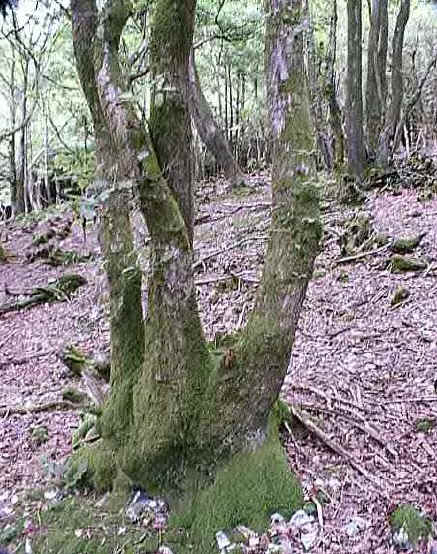Coppiced Woodland
 |
| This area of dry woodland consists mainly of deciduous trees such as oak
and hazel. Until a few years ago, the area was covered by a thick, dark jungle of alien rhododendron, blocking out sunlight and affecting the ground beneath. However, this has now been cleared allowing in more light, thus enabling the remaining native trees to grow more successfully. When the rhododendron was cleared it was found that the only surviving deciduous trees in the area were those that were taller than the surrounding rhododendron. These trees had often become exceedingly thin in relation to their height. This was brought about by the need for the trees to reach for light above the rhododendron canopy. Some of the poorer specimens have been copiced so that those trees which are left will suffer from less competition and as a consequence grow better. In the short term, coppicing will also allow more sunlight to reach the ground, encouraging the return of smaller plants at ground level. This will greatly improve and enlarge the habitat for many species of insects and other animals that feed and live in deciduous woodland. The picture above shows an oak tree which was coppiced many decades ago. Coppicing is a traditional method of woodland management. Ground flora is still very sparse because the soil has been affected by the rhododendron. As a result of this and the dense shade which prevented regrowth, there are no young deciduous tree saplings which would otherwise grow up to replace the older trees when they die. It has been found that ground flora is recovering more rapidly in areas where bonfires have burnt up the cleared rhododendron. Different woodland plant species grow in more damp areas of the Centre such as the wet woodland beside the stream. |
Visit the Woodland Education Centre